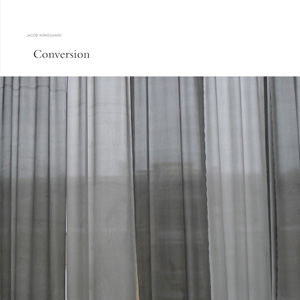Jacob Kirkegaard, "Conversion"
 As an artist, Kirkegaard has made it his focus to create art that is as disconnected from emotion or traditional musicality as possible. Which makes the premise for this album all the more compelling: two of his previous works are rearranged and presented using classical instrumentation by the Scenatet ensemble. The resulting work is much more akin to his initial compositions than a traditional classical recording.
As an artist, Kirkegaard has made it his focus to create art that is as disconnected from emotion or traditional musicality as possible. Which makes the premise for this album all the more compelling: two of his previous works are rearranged and presented using classical instrumentation by the Scenatet ensemble. The resulting work is much more akin to his initial compositions than a traditional classical recording.
"Labyrinthitis II," originally released as a stand-alone piece in 2008, is based on the notion that when perceiving sound, the human ear creates a unique internal frequency, which formed the basis of the original album.Unsurprisingly, this does not carry over explicitly when recreated via strings and horns.What does shine through, however, is a sense of intermingling sound waves resonating amongst one another.Without paying explicit attention, it is almost hard to believe that such traditional instrumentation could be generating these sounds.
The other piece on the album, "Church II," is based upon a piece from his 4 Rooms album in 2006.Originally a recording of silence within a Chernobyl church and then played back and rerecorded in the same space, here it conjures the same mood.Echoing, distant roars of percussion fill hollow spaces, creating an effective sense of scope from an architectural standpoint, and of cold desolation.
The resonating sounds grow and become heaver, oppressive and uncomfortable.A sense of abstract and disconnected drone is prominent. It sounds like a natural phenomenon, generated from anything but organic instruments.When the more overt strings finally come in, they simply conjure up a sense of dread and depression, a perfect sonic accompaniment to the barren, lifeless location in which the first recording was collected.
Both Kirkegaard and Scenatet deserve high praise for Conversion, for the former his unique sense of concept and composition, and the latter for translating it from field recordings and electronic works into distinct compositions that redefine the type of sound classical instrumentation can produce.Even detached from the original material it was based on, Conversion stands alone as a beautiful piece of sound art.
samples:
 



